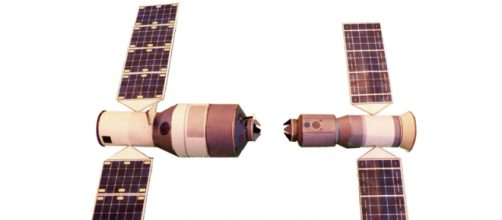China had launched its first prototype space station Tiangong-1 in 2011 with the intention of using it as a platform to set up a larger space station. The craft is now at an altitude of fewer than 186 miles and has gone out of control. China had officially informed on September 14, 2016, that it would re-enter the atmosphere in the latter half of 2017, but it would be an uncontrolled re-entry.
New Zealand Herald reports that Tiangong-1 has hydrazine onboard which is a "highly toxic" chemical and could be dangerous to Humans. The revised re-entry dates have been identified as between March 29 and April 9, and the Space Debris could fall in the US, Europe, Australia or New Zealand.
This will be a loss for space research
Tiangong-1 is an 8.5-tonne craft launched by China in 2011 and had been operational till 2016. During this period it must have been engaged in some sort of research work which will now be lost once it crashes into the Earth as space debris.
Its descent is being monitored by space agencies all over the world including the Paris based European Space Agency (ESA). The precise date and where the debris will fall will be known only during the finals weeks. Initial estimates had put it between March 17 and April 21 which is now revised to between March 29 and April 9. The exact location is difficult to predict but in the opinion of experts, the most probable impact would be in the band of latitudes of 43° north and 43° south.
Major portions of the craft are expected to burn up during re-entry, but some portions will survive and come down as debris which may contain hydrazine. This is a dangerous chemical and was in the spacecraft as fuel for its rockets. Long-term exposure to this can have health hazards and even lead to cancer in humans
Space debris and magnitude of the problem
Space debris is a genuine problem and these are created by humans.
They consist of parts of satellites and rockets that have been launched into space over the last seven decades. According to Futurism, there are thousands of such junk that are littering space and floating about as potential dangers to space missions. It is possible to detect only a tiny portion of this junk which are comparatively larger in size.
Fragments of the Chinese space station Tiangong-1 will add to the numbers. Today the focus of space organizations like NASA and ESA are on missions to the moon and Mars. They will need to draw up plans to evade such debris that can harm space vehicles and even jeopardize missions.


